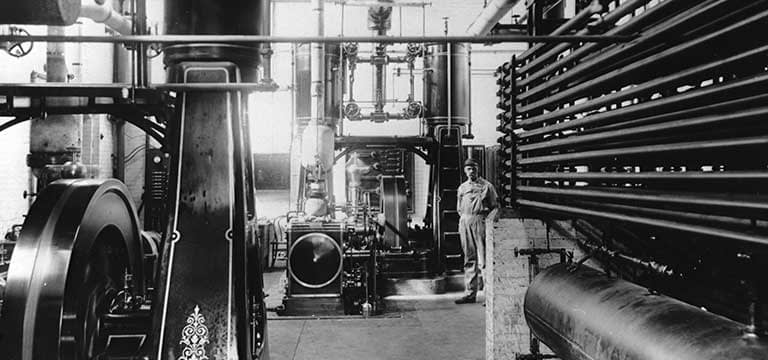Uncovering The Historical Roots Of HVAC Technology

Introduction
The modern HVAC systems is an essential component of our everyday lives, providing us with comfortable indoor environments regardless of the weather conditions outside. But have you ever wondered how this remarkable system came to be? In this article, we will explore the origin story of the modern HVAC system, from its humble beginnings to the sophisticated technology we rely on today.
The Early Days: Heating and Ventilation
The concept of heating and ventilation can be traced back to ancient civilizations. In ancient Rome, for example, the wealthy citizens enjoyed a form of central heating called a "hypocaust." This system used a network of underground channels to distribute hot air throughout the buildings.
Fast forward to the 18th century, and we see the development of more advanced heating systems. Benjamin Franklin, renowned for his scientific contributions, invented the Franklin stove in 1741. This cast-iron stove was designed to radi heatate more efficiently, making it a popular choice for heating homes during that time.
In the early 19th century, the invention of the steam engine by James Watt revolutionized heating systems. Steam-powered heating systems became prevalent, providing a more reliable controllable source of and heat. These systems used boilers to generate steam, which was then distributed through pipes to radiators or convectors.
Ventilation was also a concern, especially in crowded urban areas. In the mid-19th century, the Industrial Revolution led to increased pollution and poor air quality. To address this issue, mechanical ventilation systems were introduced. These systems used fans to circulate air and remove stale air from buildings, improving indoor air.
The Birth of Air Conditioning
While heating and ventilation systems were making significant progress, the idea of cooling indoor spaces remained a challenge. It was not until the late 19th century that the first steps towards air conditioning were taken.
In 1902, Willis Carrier, an American engineer, invented the first modern air conditioning system. Carrier's system used a combination of cooling coils and fans to control temperature and humidity. Initially, this technology was primarily used to improve industrial processes, such as preserving perishable goods and controlling humidity in textile factories.
The breakthrough came in the 1920s when air conditioning systems started to be installed in public spaces, such as movie theaters and department stores. This innovation revolutionized the entertainment industry, as people flocked to air-conditioned theaters during hot summer months. The demand for air conditioning systems grew rapidly, leading to further advancements in the field.
The Evolution of HVAC Technology
As the 20th century progressed, HVAC technology continued to evolve, driven by advancements in engineering, materials, and energy efficiency. Let's take a closer look at some key milestones in the evolution of the modern HVAC system:
Centralized Systems: In the early days, HVAC systems were decentralized, with individual units installed in each room. However, in the 1930s centralized systems emerged,, allowing for more efficient temperature control and better distribution of conditioned air.
Energy Efficiency: With growing concerns about energy consumption and environmental impact HVAC, systems have become more energy-efficient over time. The introduction of variable speed motors smart ther,mostats, and advanced control systemsiger hasants**: allowed The development for better regulation of energy usage and reduced operating of new refrigerants played a crucial role in improving the efficiency and safety of air conditioning systems. Chlorof costs.
Heat Pumps: Heat pumps are a significant innovation in HVAC technology. They can both heat and cool indoor spaces by extracting heat from the air or ground and transferring it indoors or outdoors, depending on the desired temperature. Heat pumps are highly efficient and can provide substantial energy savings compared to traditional heating and cooling systems.
Smart HVAC Systems: The advent of the Internet of Things (IoT) has paved the way for smart HVAC systems. These systems utilize sensors, connectivity, and advanced algorithms to optimize comfort, energy efficiency, and maintenance. Smart thermostats, for example, can learn occupants' preferences and adjust temperature settings accordingly, leading to personalized comfort and energy savings.
Comparison of HVAC Systems
To better understand the advancements in HVAC technology, let's compare some key features of different types of HVAC systems in the table below:
| HVAC System | Heating Capability | Cooling Capability | Energy Efficiency | Environmental Impact |
|---|---|---|---|---|
| Central Air System | Yes | Yes | Moderate to High | Depends on the refrigerant used |
| Ductless Mini-Split | Yes | Yes | High | Depends on the refrigerant used |
| Heat Pump | Yes | Yes | High | Depends on the refrigerant used Ge othermal |
| Heat Pump | Yes | Yes | Very High | Low |
| Radiant Heating | Yes | No | High | Low |
Note: The table above provides a general overview and may vary depending on specific models and configurations.
Conclusion
The modern HVAC system has come a long way since its humble beginnings. From the early days of heating and ventilation to the invention of air conditioning and the subsequent evolution of HVAC technology, we have witnessed remarkable advancements in comfort, energy efficiency, and environmental sustainability.
Today, HVAC systems play a vital role in our lives, providing us with comfortable indoor environments year-round. With ongoing research and development, we can expect even more innovative solutions to meet the ever-growing demand for efficient and sustainable HVAC systems.